Intervista a Herve Constant. Interview with Herve Constant
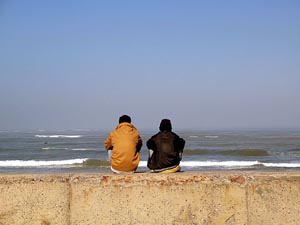
Pubblicato su art a part of cult(ure) il 10 gennaio 2010
Raffaella Losapio: 1. Dimmi qualcosa su di te e il tuo essere artista a Londra
Hervé Constant: Sono nato a Casablanca. Mia madre era marocchina e mio padre francese, ma i miei genitori si separarono quando avevo 5 anni; così mio fratello e io andammo a vivere con mio padre, nel Sud della Francia, nei pressi di Toulon, dove lui era nato.
Non ho una formazione accademica. Iniziai a lavorare, quando ero molto giovane, in un negozio di ricambi per auto. Lì incontrai il direttore dell’associazione dei genitori degli studenti, che mi consigliò di frequentare il Conservatorio de Toulon. Decisi di seguire il suo consiglio e di studiare teatro. Completai i 4 anni di studio e dopo mi iscrissi all’Ecole de la rue Blanchead, una delle principali scuole di recitazione di Parigi. Vinsi una borsa di studio che mi permise di frequentare per quasi 2 anni. Durante questo periodo mi iscrissi anche ad un gruppo di Flamenco e andai con la compagnia Rafael Aguilar in Germania, in Belgio e in Francia.
Stranamente arrivai a Londra con la scuola di recitazione per visitare alcuni teatri e scuole del Regno Unito e rimasi così impressionato per la qualità della recitazione che decisi di vivere in Inghilterra per perfezionare la recitazione ed imparare la lingua. Feci domanda per ottenere l’ingresso in un college di Hampstead, e fui accettato.
Al tempo dei miei studi in Francia, Parigi e persino a Toulon ero molto interessato alle arti visive. Iniziai a fare disegni, dipinti di vario formato e con grande sorpresa piacquero a tal punto che ebbi richieste di acquisto.
Tutto cominciò così.
Dopo 4 o 5 anni, decisi di tornare nel sud della Francia. Ebbi la fortuna di vincere il primo premio alla Biennale di Nizza del 1984 ed ottenere una grande commessa per la marina francese nel 1985. A Toulon, durante il mio soggiorno, frequentai anche un corso di stampa d’arte della durata di due anni presso le Beaux-Arts.
Successivamente tornai a Londra, una grande città vibrante e piena di persone interessanti con menti curiose, dove vivo tuttora.
ISTRUZIONE:
1967-70 Conservatoire National de Musique de Toulon
1971-73 Ecole Nationale Superieure des Arts et Techniques du Teatro, a Parigi.
1980-83 Beaux-Arts de Toulon (Incisioni/serigrafie).
R.L.: 2. Che cosa ti spinge a dedicare la tua vita a creare e produrre opere d’arte?
H.C.: Per me il teatro e le arti visive sono simili a una donna, come priorità. Mantengo sempre le mie distanze, e non credo che questo sia un buon modo per passare alla seconda fase di un rapporto di lavoro o di coppia.
Lo studio è il mio mondo, uno spazio in cui godo di molti piaceri, un luogo di tranquillità e ricchezza, fra letture, film che proietto ogni tanto.
Ho i miei tempi, mi alzo ogni mattina abbastanza presto per lavorare almeno fino a metà o tardo
pomeriggio. Continuo a dire a tutti che se vogliamo incontrarci deve essere a metà o nel tardo pomeriggio.
Una disciplina.
Anche con gli amici, cerco, per quanto è possibile, di mantenere i miei tempi. Posso anche essere flessibile e accomodante. La priorità per me è avere una conversazione interessante.
Apro il mio spazio alle proiezioni di film e video, ma mi accerto che non diventi il posto degli altri. Ecco, si tratta di un’abitudine, un impulso per realizzare pienamente il mio tempo.
R.L.: 3. Quando, come e perché hai iniziato le riprese?
H.C.: Nel 1997 ho ottenuto una borsa di studio per lavorare e viaggiare in Bosnia, dove ho scattato moltissime foto di luoghi bruciati o pieni di segni di granate. Quando sono ritornato a Londra, mi sono ritrovato una grande quantità di lavoro, materiale che potevo usare per dipinti, proiezioni e come stampe da mostrare. Da allora ho iniziato a pensare come un fotografo. Sono grato a quel viaggio in quanto mi ha dato la possibilità di scoprire un altro interesse. Da allora, continuo questo processo creativo.
Dalla foto, al video il passo non è stato molto lungo. Essendo un pittore, quando ho venduto e ho guadagnato denaro, l’ho reinvestito in nuovi materiali, viaggi o per pagare il mio studio per il periodo più lungo possibile per lavorare in tranquillità. Credo anche che un artista può lavorare bene, quando la pressione dei bisogni materiali è soddisfatta.
Così sono andato avanti nella realizzazione di due nuovi progetti.
Il primo consisteva nel chiedere ad un caro amico di posare e di avvolgere e svolgere intorno al suo capo una lunga sciarpa nera.
La seconda proposta venne dall’idea di usare le mie mani come ‘danza’. Sono sempre rimasto affascinato guardando le mani delle persone, il modo di gesticolare, di esprimere loro stessi, questo diventa un riflesso della loro mente e del comportamento. Le mani rivelano e descrivono così tanto: la tenerezza, la freddezza, la violenza, la sensualità e gesti delicati. Possono essere rivelate così tante cose che ho appoggiato un panno su un tavolo e la fotocamera con una certa inclinazione e profondità. Poichè a quel tempo non avevo nessuno a cui chiedere collaborazione, ho fatto uso delle mie mani. Poi le ho lasciate esprimere tutte le emozioni che attraversavano la mia mente e ho permesso che le mie mani reagissero a queste emozioni. Ho provato un paio di volte per vedere il risultato. Poichè non mi piaceva l’uso del colore in quanto esso distoglieva l’attenzione dalle mani, ho ricominciato senza colore e sono passato al bianco e nero e, evitando qualsiasi suono musicale, per la stessa ragione. Quindi, mantenendo il video in quel modo, ho lavorato molto meglio.
R.L.: 4. Quali sono i tuoi soggetti preferiti per i tuoi film/video?
H.C.: Molto spesso può essere una miscela di significati assurdi, politici o anti borghesi. Possono trasmettere una visione surreale e beffarda dei valori della borghesia. L’ossessione della presentazione, dell’apparenza, della competizione per nominarne soltanto alcuni, e del mostrare che si ha qualcosa di migliore e di più costoso rispetto al tuo vicino.
A volte ho la necessità di interpretare le cose che stanno intorno a noi in un modo poetico. Oppure in modo surreale, come nel pezzo chiamato ‘Toute Lune est Atroce’ dove vediamo la luna che si muove, nascondendosi e riapparendo dietro il passaggio rapido delle nubi in una sorta di balletto con l’unica parola ‘Go’ detta in una sorta di supplica, di minaccia e di offerta. Simile a quello chiamato ‘Mano Ballet’ in cui tante emozioni seguono le immagini.
Quello chiamato ‘Run’ ha per soggetto il tempo. L’immagine è un orologio sportivo che sembra un giocattolo. Molte persone sono ossessionate dal tempo e dal suo valore. Il tempo è denaro. Non sprecare il mio tempo.
Non posso darti il mio tempo, è prezioso. Quanto vale un’ora del tuo tempo? Poi, il video mostra un orologio; il tempo che passa, restare fermi vuol dire sprecare il tempo. Ora, forse ti rendi conto che correre come uno zombie appresso al tempo, essere sempre in tempo è anch’esso uno spreco di tempo.
Un altro video, chiamato ‘Demeures 1-59’, per cui mi sono appassionato, rappresenta una serie di foto di porte di ingresso. Volevo assegnare un tempo definito e breve per ognuna di esse. Un secondo per ciascuna di esse e 59 foto mostrate in 59 secondi. Ho inserito in questo video una registrazione dal film di Jacques Tati chiamato ‘My Uncle’, pensando che sarebbe stato in sintonia con esso. La registrazione del suono descrive la proprietaria che mostra la cucina con tutte le sue attrezzature. Esso è divertente, almeno per
me.
R.L.: 5. Come sviluppi i tuoi films/video, segui determinati principi o stili, ecc.?
H.C.: No, non seguo nessun principio. Per me è simile ad un’immagine o a un dipinto. Trovo l’idea e da quel momento vedo come posso procedere in essa. Per quanto, pensandoci bene questo potrebbe essere un modo di procedere per sviluppare un video.
R.L.: 6. Quali sono le aspettative dei nuovi media per i film/video in generale, e per te?
H.C.: E’ attualmente molto interessante per una vasta gamma di artisti per la ragione principale di essere un mezzo immediato, più semplice e diretto. Non è necessario avere a disposizione abbondanza di tempo, se puoi lavorare seguendo i tuoi ritmi personali. Personalmente si adatta ciò che attualmente mi interessa, ma al momento non ho grandi aspettative in merito. E’ solo un veicolo per continuare a creare.
R.L.: 7. Lavori individualmente come artista di video/film o lavori in un team?
H.C.: Lavoro individualmente (anche se non per scelta), ma finora è andata così. Sarei molto interessato a lavorare in un team per scoprire un differente modo di approccio alla creazione. Però, sono abbastanza
difficile, impaziente e lavoro duramente. Quindi apprezzo molto gli artisti attenti, veloci e responsabili.
R.L.: 8. Chi o che cosa influenza sul tuo modo di fare film/video?
H.C.: Mi piace filmare in modo lento, non complicato, senza l’uso di molti effetti. Uso un simbolo e un’idea per trasmettere un’emozione. Questa emozione potrebbe essere satirica, umoristica o poetica.
R.L.: 9. Quali sono i tuoi futuri progetti o sogni come film/video maker?
H.C.: Come un bambino ho un sogno, quello di essere più ambizioso, e saltare oltre il muro per andare verso nuovi orizzonti di maggiore sfida.
Una delle mie aspirazioni è quella di fare un nuovo lungometraggio.
Attendo con ansia questo momento.
R.L.: 10. Perché hai aperto il tuo studio ad altre projezioni di artisti internazionali?
H.C.: Per mostrare interesse per il loro lavoro e per condividere una nuova esperienza. Proietto quello che per me è interessante, stimolante e i lavori che hanno una voce e uno stile personale. Credo che molte persone possano scrivere un libro, dipingere un quadro, scrivere una poesia, ma pochi hanno i mezzi per trasmettere il loro mondo personale. La maggior parte si conforma al commercio e alle abitudini.
R.L.: 11. Vengono molte persone alle tue proiezioni?
H.C.: No, forse è dovuto alla scelta dei video e dei film. I film proiettati non sono nè trendy nè commerciali.
Non scelgo i film divertenti, facili e autocompiacenti. Come un testo o un dipinto devono mostrare un’esperienza, uno stato d’animo particolare.
R.L.: 12. Dopo le proiezioni dei film/video segue un dibattito?
H.C.: Molto raramente, in quanto ho notato che può diventare un esercizio di teoria e una esibizione di personalità. Inoltre, credo che l’esperienza sia molto personale, come in ogni forma d’arte. Occorre creare un proprio dialogo con l’artista. Gli artisti che scelgo esprimono la loro esperienza di pensiero e la loro vita senza imporre i loro punti di vista. Non c’è bisogno di dire al pubblico che è giusto o sbagliato, ma forse di aprire una porta per porsi delle domande.
R.L.: 13. Bene Hervé, quando e quali saranno le prossime proiezioni di film/video nel tuo studio 29 at SPACE STUDIO 10 Martello Street E8 in London?
H.C.: Le prossime proiezioni avranno luogo sabato, 7 febbraio 2010, alle ore 19.15:
‘SUSPICION’ ‘FOUR O’CLOCK’ by Alfred Hitchcock
‘TO RISE AGAIN’ by Raffaella Losapio
R.L.: E’ gentile da parte tua ricambiare il mio invito del giorno 15 Dicembre 2006, quando sei venuto allo studio.ra di Roma per la proiezione del tuo lungometraggio ‘THE OUT THERE’, riguardante il libro
“The Horla” (in italiano “Il Gorla“) di Guy de Maupassant (clicca per vedere il video promo http://youtu.be/pbzjxQ90cUM)
http://www.studiora.eu/2006/12/15/building-and-the-out-there-di-herve-constant/.
Questo è un ottimo esempio di autentica collaborazione fra artisti; la dimostrazione che la ricerca artistica in certi casi è al di sopra di egoismi personali, di mediocrità di spirito e di interessi economici.
Altri link e risorse
14 short films possono essere visti nel sito:
www.projectunicorn.com/herveconstant
Il più recente è intitolato ‘Forces of Destiny’ co-prodotto con Madelyn Freeman.
Hervé Constant
info@herveconstant.co.uk | www.herveconstant.co.uk
Space Studio 10 Martello Street London E8 3PE England UK
Hervé Constant è un artista francese che vive a Londra. Nacque a Casablanca, in Marocco ed è stato allevato per oltre dieci anni in un orfanotrofio a Hyeres, nel sud della Francia. Ha studiato teatro presso il
Conservatorio de Toulon prima di ottenere una sovvenzione per promuovere i suoi studi presso l’Ecole Nationale Superieur des Arts et Technique du Theatre di Parigi.
Il lavoro di Hervé è una miscela di diversi interessi, influenze sociali e culturali.
I progetti recenti riguardano foto, video, suoni e libri d’artista.
Le mostre più recenti di Hervé Constant sono state:
7 Encuentro International Visual Poesia Sonora sperimentale, Buenos
Aires, Argentina.
Un suo lavoro è stato presentato al MONA, Museum of New Art, Detroit USA.
PI-Five video / short film festival, il National Museum in Szczecin Polonia e poi a Berlino Germania 05, Soundlab Channel, III edizione, Colonia 06.
Una registrazione sonora è stata inclusa in ‘WPS1 Sound Fetish’ alla Biennale di Venezia 05 ed è ora parte dell’archivio del MOMA di New York.
Project 59, 59 Seconds Video Festival, itinerante a Brooklyn NY, Alfred University NY, e presso l’Academia Internacional de Cinema, Sao Paulo, Brasile; curata da Irina Danilova, marzo 2007.
Il video intitolato ‘Run‘ è stato scelto dalla Hayward Gallery di Londra come parte Surreal di 60 secondi; la proiezione ha avuto luogo al National Film Theatre.
Proiezioni recenti hanno avuto luogo allo studio.ra di Roma nel Dicembre 2006 e alla New York University di Londra, gennaio 2007.
Il suo film intitolato ‘Between Two Worlds‘ 8mn è stato proiettato al Barbican Film Festival, Cinema 1, il 2 luglio 2007.
Nel mese di ottobre 2007 lo stesso film ha vinto il concorso ‘I LOVE LONDON‘ organizzata dalla Filmaka e sponsorizzato dalla serie TV.
59 spettatori all’International Dance hanno selezionato il suo video ‘in 59 secondi’ è stato selezionato tra i 59 video top 59 Seconds Video Festival 2009.
Una serie di suoi dipinti sono stati mostrati lo scorso aprile al Kings Place, Londra, durante l’evento organizzato dal Poeta in the City “Rimbaud e Verlaine“.
(Traduzione italiana a cura di Raffaella Losapio)
Raffaella Losapio: 1. Tell me something about you and your life as an artist in London.
Hervé Constant: I was born in Casablanca, Morocco. My mother was Moroccan and my father French but my parents separated when I was 5 and both my brother and I went to live with my father in South of
France, near Toulon where he was born.
I don’t have an academic background. When I was very young I worked in a shop selling car parts. There I met the director of the students’ parents association who advised me to join the Conservatoire de Toulon. I followed his advice and chose to study theatre. Since the courses were held either late afternoon or evening I could follow the majority of them. I spent 4 years there and then applied to one of the main Drama school in Paris called Ecole de la rue Blanche. Fortunately, I was accepted given a grant and studied for nearly 2 years at that school. That same year I joined a Flamenco touring group and went with the Rafael Aguilar
Company to Germany, Belgium, and France which was truly a great experience and I enjoyed this period very much.
How I came to live in London is strange. It so happened that students from the Drama school were invited for a few days to visit some theatres and schools in the UK and I was so impressed with the quality of acting that I thought it would be a great experience to live, to study part acting and learn the language in England. I applied to study at a college in Hampstead, and was accepted but I couldn’t get a grant because I had not been living in the country long enough.
During my student days in Paris and even in Toulon I was very interested by the visual art and I remember quite clearly joining pictures of paintings in my theatre notes books. I started doing drawings, small and not so small paintings. To my surprise, those works got some good response to the point that I got some propositions of purchase. This is how it all started.
After about 4 or 5 years I decided to go back to south of France thinking it would be easier to concentrate and develop in that field. I was quite lucky to get a first prize at the Biennale de Nice 1984 and this led on to a major commission for the French navy a 5×3 meters surface 1985. There in Toulon, during my stay, I also pursue a course on printing at the Beaux-Arts. The course which lasted 2 years was based on silkscreen, etching etc…
I went back to London where I am still living albeit sometimes complaining about the quality of life, the weather and the cost of living here but deep down I realise and appreciate that London is a great city, vibrant and full of interesting people with curious minds.
EDUCATION:
1967-70 Conservatoire National de Musique de Toulon
1971-73 Ecole Nationale Supérieure des
Arts et Techniques duTheatre, Paris.
1980-83 Beaux-Arts de Toulon (Etchings/Silkscreens).
R.L.: 2. What moves you to dedicate your life to create and produce works of art?
H.C.: For me theatre and visual art are similar to a woman, a priority. I always keep my distances and I don’t think that is a good way for going to the second phase of a relationship (of a couple). The studio is my world, a space where I enjoy much pleasure; it is a space of tranquillity and richness. Between readings, see films that I project, here, once in a while. I have my tempo; I get up each morning reasonably early and very soon after a strong coffee I start to work. At least till mid or late afternoon. I keep saying to everyone that: if we can meet it has to be mid and late afternoon. A discipline. The same with friends, I try to as much as possible to keep my tempo. I can be flexible and accommodating. I am conscious of certain priorities: to have an interesting conversation. I know I need to include those things in my space but I make sure that it doesn’t become the space of others. There we are. It is a customary need, an impulse to fulfil the time this way.
R.L.: 3. When, how and why have you started filming?
H.C.: I obtained a grant to work and travel to Bosnia in 1997and there I took a lot of photos of places, either burnt or full of shrapnel marks.
When I came back to London and went to develop the series I thought
I did have a body of work; material I could use for paintings, projections and as prints to show them. I started to think as a photographer from that time. I am grateful for that trip as it gave me the possibility to discover another interest. Since then, I enjoy that process of creation.
From the photo, it wasn’t very far to move into video. Being a painter, I made a good sale at the time and every time some money comes my way I reinvest it straight away into new materials, trips or pay for my studio for the maximum amount of time in order to have a certain peace of mind. I also believe that an artist can work well when the pressure of materials needs is met so I got hold of a video camera and got on with producing two projects. The first one evolved through asking a dear friend to pose and wrap and unwrap his head with a long black scarf.
The second proposition came from the idea of using my own hands as ‘ballet’. I have all the time been
fascinated by watching hands, the way people gesticulate, express themselves and so often being a
reflection of their mind and behaviour. They are so revealing, so descriptive. Hands convey so much; tenderness, coldness, violence, sensuality and delicate gestures.
So many things in fact can be revealed that I set a cloth on a table and placed the camera at a certain angle and depth. Having, at the time no one I could think of asking to pose I made use of my own hands. I let them express any emotion coming through my mind and let my hands react to these emotions. I tried a few times to see the result. Not liking the use of colour for the reason that the colour was disturbing the focus on the hands I restarted without colour and switched to the B+W and I must say avoiding any musical sound also for the same reason and using the take in B+W worked much better in my view so I kept the video that way.
R.L.: 4. Which are your preferred subjects for your films/videos?
H.C.: Very often they can be a mixture of absurd, political or anti bourgeois meanings. They can convey a surreal and mockery of the values of the bourgeoisie. The obsession of presentation, of appearance and competition to name but a few that is to show off that you have something better and more costly than your neighbour.
Sometimes they have a need to interpret things seen around them in a poetic way. Again Surreal like the piece called ‘Toute Lune est Atroce’ we are seeing just the moon balancing, hiding and reappearing under the rapid passage of clouds in a kind of ballet with the only word ‘Go’ said in a kind of supplication, of menace, tender. Similar to the one called ‘Hand Ballet’ many emotions do follow the imagery.
The one called ‘Run’ is about time.
The image is a sport clock, looking like a toy. It says the same as so many people are obsess with time
and its value. Time is money. Don’t waste my time. I can’t give you my time, it is precious. How much do
you charge an hour?
Then, the video shows a clock; time turning, being stuck in front of it wasting your time. Now, maybe You realize running around like a zombie after a time, being in time is a waste of time.
Another one I am fond of called ‘Demeures 1-59’ represents a series of photos of front doors. I wanted to give a very sharp and short time for each of them. 1 second for each one and 59 photos shown within 59 seconds. To add to the video I included a recording from the film by Jacques Tati called ‘My Uncle’ I thought it will go well with it. The sound recording describes the Lady owner showing off her kitchen and the apparatus. It is hilarious, at least to me.
R.L.: 5. How do you develop your films/videos, do you follow certain principles, styles etc?
H.C.: No, I don’t develop or follow any principles. For me it is similar to an image or a painting. I get an idea and from that I see how I can progress into it. Though, yes maybe that will explain a way of development to do a video.
R.L.: 6. What are the chances of new media for the genre film/video in general and you personally?
H.C.: It is very attractive at the present time for a wide range of artists for the main reason of being immediate, easier and more direct. You don’t need plenty of space you can work on it at your own pace. Personally it suits what I am interested now but I don’t count on it in having a great expectation. Just a vehicle to keep creating.
R.L.: 7. Do you work individually as a video artist/film maker or do you work in a team?
H.C.: I work individually (though not by choice) but so far that is the way it has been. I would be very interested to work in a team to discover another way of approach to creation. Though, I am quite difficult, impatient and hard working. Therefore I like artists very focus, fast and responsive.
R.L.: 8. Who or what has an influence on your film/video making?
H.C.: I like to film slow, neither complicated nor making use of many effects. I use a symbol and an idea to convey an emotion. That emotion could be satirical, humoristic, or poetic.
R.L.: 9. What are your future plans or dreams as a film/video maker?
H.C.: Like a child I have a dream to be more ambitious, to jump the wall and go with more challenging venues. One of my aspirations would be to make a long feature. I look forward to that.
R.L.: 10. Why did you open your studio to other international artists’ projections?
H.C.: For the reason of showing some interest to their work and sharing some experience. I show what I feel is interesting, challenging and the work who has a personal style and voice. I believe a lot of people can write a book, do a painting, write a poem but very few have the means to convey their personal world. Most conform to a learnt trade and habits.
R.L.: 11. Do many people attend the projections?
H.C.: No, maybe it is due to the choice of the videos and films. The films shown are not trendy and commercial. I don’t choose the films for being entertaining, easy and self satisfying. Like a piece of writing or a painting they need to show an experience, a mood.
R.L.: 12. After the projections is there discussion about the films/videos?
H.C.: Very rarely since I noticed it can become an exercise in theory and a show of personalities. Also, I believe like most art forms being a personal experience. You need to create your own dialogue with the
creator. In my choice of artists they (the creators) don’t impose their views they are expressing their own experience of thoughts and life. No need to say to the audience you are right or wrong but maybe
to open a door to interrogation.
R.L.: 13. Well Hervé; when and which will be the next projection of film/video in your studio 29 at SPACE STUDIO 10 Martello Street E8 in London?
H.C.: The next projections will be on Sunday 7 February 2010 at 7.15pm:
‘SUSPICION’ ‘FOUR O’CLOCK’by Alfred Hitchcock
‘TO RISE AGAIN’ by Raffaella Losapio.
R.L.: It is kind of you to return my call of15th December 2006, when you came to the studio.ra in Rome for the screening of your film ‘THE OUT THERE ‘, about the book “The Horla” (in Italian “Il Gorla“) by Guy de Maupassant http://youtu.be/pbzjxQ90cUM
http://www.studiora.eu/2006/12/15/building-and-the-out-there-di-herve-constant/
This is an excellent example of true collaboration between artists, the demonstration that artistic research in some cases is above selfishness, meanness of spirit and personal and economic interests.
Some links & resources:
14 short films that can be seen at: www.projectunicorn.com/herveconstant
The most recent one is called ‘Forces of Destiny’ co-produced with Madelyn Freeman.
Hervé Constant
info@herveconstant.co.uk | www.herveconstant.co.uk
Space Studio 10 Martello Street London E8 3PE England UK
Hervé Constant is a London-based French artist. He was born in Casablanca, Morocco and was brought up for over ten years in an orphanage in Hyeres, South of France. He studied theatre acting at the Conservatoire de Toulon before obtaining a grant to further his studies at the Ecole Nationale
Superieur des Arts et Technique du Theatre in Paris.
Hervé’s work is a mixture of different interests, social and cultural influences.
Recent projects involve video, photos and sounds and Artist’s Books.
Hervé Constant’s most recent exhibitions were at: 7 Encuentro International Poesia Visual Sonora Experimental, Buenos Aires Argentina. His work is shown and in the collection of MONA, Museum of New Art, Detroit USA. PI-Five video/short films festival, National Museum in Szczecin Poland and then Berlin Germany 05, Soundlab Channel, edition III, Cologne 06. Most recently a sound recording of his was included in ‘Sound Fetish’ WPS1 at the Venice Biennale 05 and is now part of the Archive of MOMA New York. Project 59, 59 Seconds Video Festival, touring to Brooklyn NY, Alfred University NY, and at the
Academia Internacional de Cinema, Sao Paulo, Brazil; curated by Irina Danilova, March 2007. Most recently the video called ‘Run’ was selected by the Hayward Gallery London as part of the 60 second Surreal; the projection took place at the National Film Theatre. Recent projections have taken place in Roma, Studio.Ra, Dec 06 and the New York University in London January 2007.
His film called ‘Between Two Worlds’ 8mn was shown at the Barbican Film Festival, Cinema 1 the 2 July 2007 6pm. In October 07 the same film won the competition ‘I LOVE LONDON’ organised by Filmaka and
sponsored by LOVEFILM.
From a selection of 59 International audiences Hervé’s video ‘Dance in 59 Seconds’ was selected amongst the 59 top videos in the 59 Seconds Videos Festival 2009.
A series of his paintings were shown last April at Kings Place, London during the event organised by Poet in the City “Rimbaud & Verlaine“.
Photos:
Awaiting Discovery, oil on canvas 40×32, 2008, private collection London UK
Cornice Casablanca, 2008
Studio 10, Martello Street E8 Herve Constant
Wrapping and Unwrapping, video still by Herve Constant
Demeures 1-59, video still by Herve Constant
Killing, artist book by Herve Constant
Between two Worlds by Herve Constant 2007
Flight, oil on canvas private collection New Zealand
Food for the dead, digital photo Havana Cuba 2005
Homage to Bosnia, installation in Kiev Arsenal Museum 2009
Run, video still Art Basel Miami 2009
Hand ballet, video stills 2008
Forces of destiny, film co-produced with Madelyn Freeman
My heart, acrylic on canvas 60x50in 2008

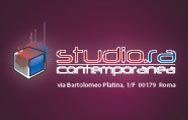








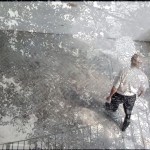
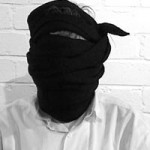
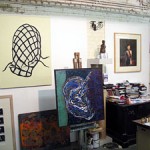
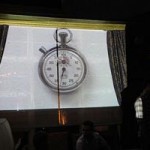
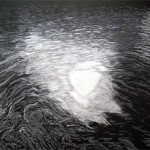
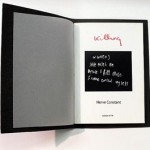
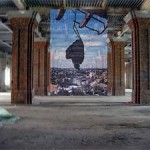
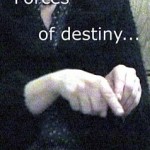
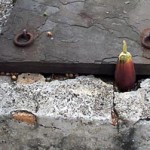
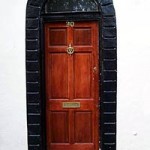
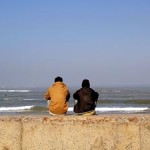
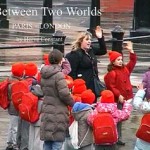

Lascia un commento